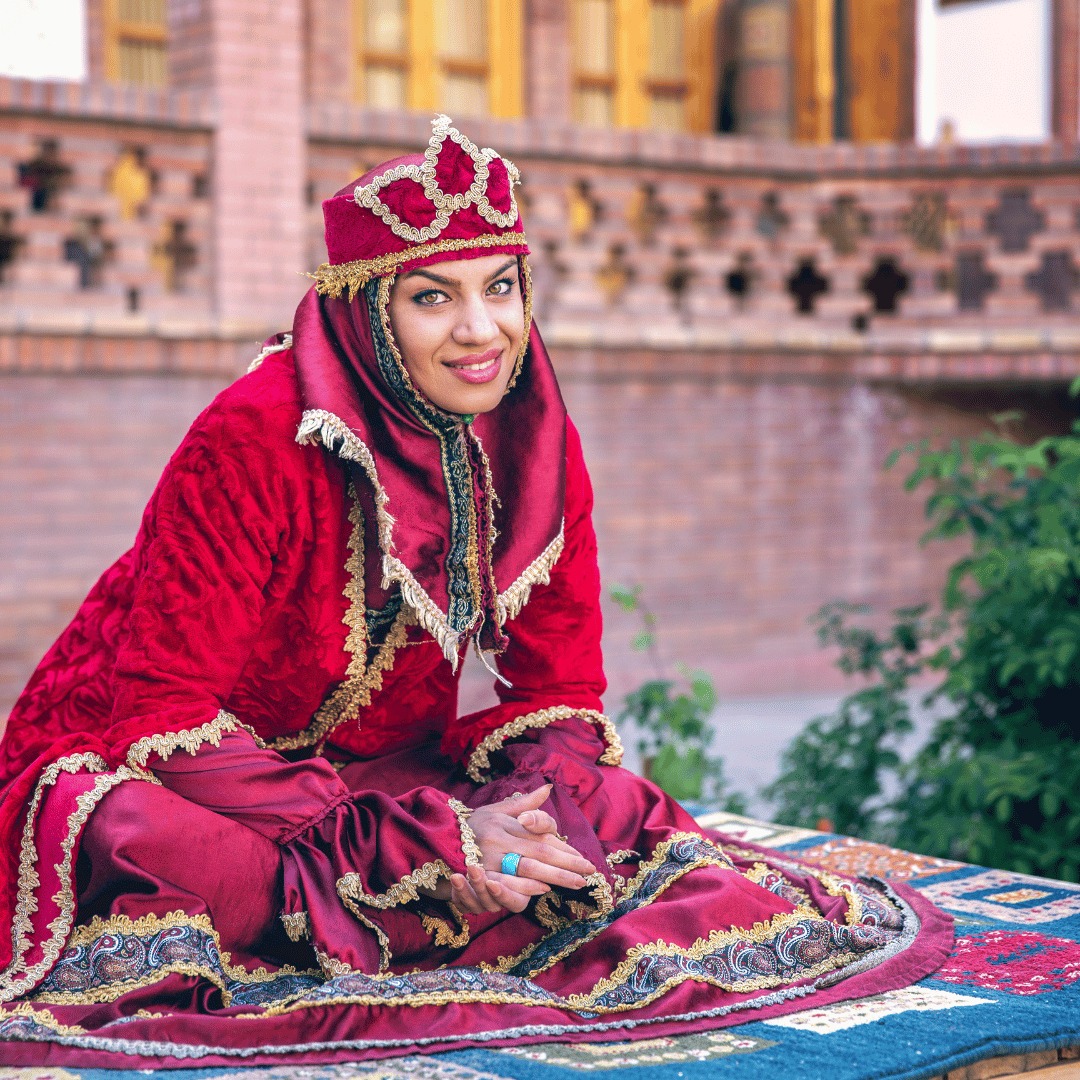Middle Eastern Fabrics and Patterns
- September
- middle east
- 4 mins

Please select from one of the below options to be redirected to the booking pages for our schools
Hello, little explorers! Are you ready to go on a magical journey through the vibrant world of Middle Eastern fabrics and textiles? These special materials are used to make beautiful clothes that people wear in countries like Egypt, Iran, Turkey, and many more. In this blog, we'll learn about the colors, shapes, and patterns that make these fabrics so unique and special. Let's dive in and discover the wonderful world of Middle Eastern fashion!
Middle Eastern fabrics are known for their bright and bold colors. You'll often see beautiful shades of red, blue, green, and gold. These colours aren't just pretty to look at; they also have special meanings. For example, red can symbolize love and joy, while blue is often associated with peace and protection. When you wear these colorful fabrics, it's like wrapping yourself in a rainbow!
One of the coolest things about Middle Eastern fabrics is the amazing shapes and patterns they have. Let's take a look at a few:
 Paisley Patterns - In Persian culture, you'll find a teardrop-shaped pattern called "boteh" or "paisley." These swirly shapes are often found on a special fabric called termeh, which is used for fancy clothes and decorations. The paisley pattern looks like little leaves or drops and is often filled with intricate designs.
Paisley Patterns - In Persian culture, you'll find a teardrop-shaped pattern called "boteh" or "paisley." These swirly shapes are often found on a special fabric called termeh, which is used for fancy clothes and decorations. The paisley pattern looks like little leaves or drops and is often filled with intricate designs.
Zigzag Patterns - In Turkey, a fabric called ikat is famous for its bold zigzag patterns. These patterns are created by dyeing the threads before weaving them together. The zigzags can be in many different colors and make the fabric look energetic and fun!
Geometric Shapes - In Arabic textiles, you might see a lot of geometric shapes like squares, triangles, and diamonds. These shapes are often arranged in repeating patterns that create a mesmerizing effect. They can be found on fabrics like kaftans, which are long, flowing robes worn by men and women.
Middle Eastern fashion is full of beautiful and unique clothes. Here are some examples:
 Kaftan - A kaftan is a loose, long robe that can be decorated with embroidery, beads, or other embellishments. It's perfect for staying cool in hot weather and comes in many colors and patterns. You might see kaftans at special occasions like weddings or festivals.
Kaftan - A kaftan is a loose, long robe that can be decorated with embroidery, beads, or other embellishments. It's perfect for staying cool in hot weather and comes in many colors and patterns. You might see kaftans at special occasions like weddings or festivals.
Abaya - In many Arabic-speaking countries, women wear a garment called an abaya. It's a long, flowing black robe that covers the body. While it might seem simple, many abayas have beautiful embroidery or colorful accents that make them unique.
 Chador - In Iran, some women wear a chador, which is a large piece of fabric that wraps around the body. It can be plain or decorated with delicate patterns. The chador is often worn over other clothes and is a traditional part of Persian fashion.
Chador - In Iran, some women wear a chador, which is a large piece of fabric that wraps around the body. It can be plain or decorated with delicate patterns. The chador is often worn over other clothes and is a traditional part of Persian fashion.
Middle Eastern traditional fabrics and textiles are a treasure trove of color, shape, and pattern. From the swirling paisleys of Persian termeh to the zigzag ikats of Turkey, these fabrics tell stories and share the rich culture of the region. Whether in a bright kaftan or a flowing abaya, the people of the Middle East use these beautiful textiles to express their unique traditions and styles.
We hope you enjoyed learning about these amazing fabrics and can't wait to see what beautiful patterns you create in your own clothes and drawings!